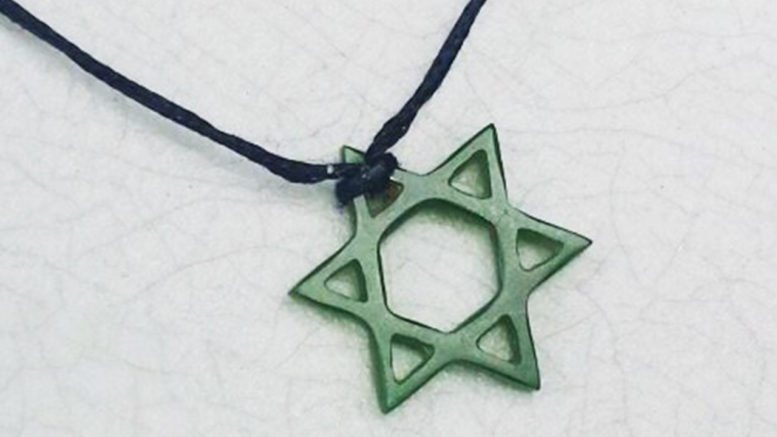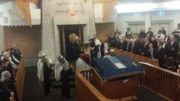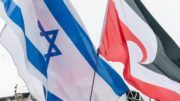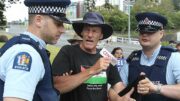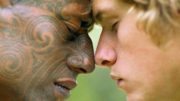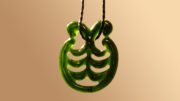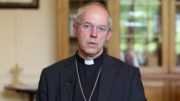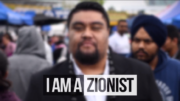Awataha Marae, on Auckland’s North Shore, may be one of the country’s coolest Māori cultural centres. The impressive centre brings together traditional Māori heritage with a creative street vibe and offers a variety of services to unify the community and encourage local pride.
So why does one of its major projects—the completion of a Māori translation of scriptural texts bound for Israel—have as much to do with ancient Jewish traditions as the immediate life of an indigenous community here at the end of the world?
As surprising as it may be to some, the answer is that they’ve never been that far apart.
Long before the Awataha centre was established or its recent project envisaged, indeed long before modern New Zealand’s founding in 1840, the relationship was there to see. Just as the British colonialists who settled here believed they were establishing a version of old England, an enduring belief among much of our country’s Māori population – dating back to their first conversion to Christianity in the early 19th century – is that theirs is a far-flung patch of Zion.
It is a view that has held relations in notably good stead between local Māori, who account for 12 percent of the population in a country of 4.5 million people, and a Jewish community that has never numbered more than 7,500.
That relationship has remained firm, even during times of social turbulence between Māori and the country’s Anglo-Saxon political establishment, and some of that warmth has even been extended by Māori to Israel. “Relations between Māori and Jews have always been an important priority for us here, and I can say that they’ve always been excellent,” Amir Gissin, a onetime chargé d’affaires at the Israeli Embassy in Wellington, says. “One of the main reasons for this is because from both sides, Māori and Jewish, it’s obvious that we share common beliefs and history. Ours is a close friendship.”
Indeed, in 1995, as part of the Jerusalem 3000 celebrations, the country’s then Māori queen, Dame Te Atairangikaahu, joined officials to plant a commemorative olive tree in the Waikato.
The Israeli mission in Wellington reopened its doors for diplomatic business in 2010, and once again, cultural and economic relations with Māori have continued to be a cornerstone of its activities.
Mana from heaven
The first known link between Māori and Jew made by English colonialist Samuel Marsden also had an Israeli theme.
Marsden declared in 1819 that the Māori had, in fact, evolved from one of the lost tribes of Israel. Influenced by the era’s stereotypes of Jewish identity, his widely published study of the two groups notes several intersecting points, among them trading skills, a similarity of roles between Māori elders and rabbis, and a common conception of God.
Other missionaries drew up a list of 38 near-identical religious attitudes between Old Testament Jew and Māori, ranging from customs of burial and menstruation to conduct in warfare. A self-styled anthropologist of the era, Arthur Thompson, declared that Māoris had “Jewish noses,” reinforcing what was imagined to be a Semitic connection.
According to Anne and Laurie Gluckman, a team of contemporary local Jewish historians, the views of Marsden found favour among both groups. By the mid-1800s, it was just as likely for a Māori tribesman to be declaring himself a true “Israelite” or “Jew,” the latter usually by the transliterated terms Tiu or Hurai.
In the 1830s, the warrior-cum-priest Te Atua Wera founded a movement on the notion that Māori were one of Israel’s lost tribes, specifically chosen by God. His followers, mostly already converted to Christianity, recharacterised themselves as “Jews,” believing that the settlers’ religion had rendered them strangers in their own land. In all, the Old Testament link that missionaries had served to the Māori as an entree into Christianity became an end in itself for the country’s 10 known Māori religions.
According to author Bronwyn Elsmore’s historical survey of Māori spirituality, a reason for this was that the image of God was apprehended very differently by the colonisers and the colonised. “While intertribal wars had decreased markedly by the 1830s, with the mission teachings often being used as a justification, the Christian god, with his image of father-figure and peacemaker still did not appeal to the Māori,” she writes.
“The glimpse shown in Exodus 20, however, did present a different image—of a god who laid down rules to be kept, and who was feared for his power and justice.” Significantly, perhaps, the greatest distribution of Bibles also took place at the time of the greatest dissatisfaction among Māori, in for instance the issue of land confiscation, toward their new overlords.
Te Ua Jew
Netane Manuka was among those to whom the Jewish idea had appeal. Another of the self-declared prophets (“somewhat famous, but very villainous,” in the words of one missionary), his name appears in official correspondence during the 1880s. Elsmore speculates that his name was a transliteration of Nathan—there were already Jewish families with this name in New Zealand by this point—and an explicit nod to the namesake Old Testament prophet. “It’s possible to see that this was a further response which saw the Māori race as Israelites,” she writes, with the prophet naming his people as the chosen ones and the colonisers cast as the marauding Gentiles.
That account contains a reasonable amount of conjecture. On the other hand, Te Ua Haumene, another of the country’s main tribal warriors during the land wars between settler and native in the mid-1800s, identified himself in a trance as Moses and thereafter, indisputably, went on occasion by the name of Te Ua Jew.
For the few mainstream Jews who lived in the country at that time, it was probably just as well that he did. Haumene’s forces specifically spared the lives of Jewish traders in the towns they captured.
Indeed, this empathetic relation—this affinity to the point of sparing or protecting each other’s life—would never by entirely lost. More than a century on, for instance, local history records the story of a Jewish doctor, Joseph Burstein, who practised at Kati Kati. There was a large tree by his gate and he wondered why his Māori patients often attached his prescriptions – unfilled – to that tree. Finally he enquired why that was done. Such was his mana, that his meds were not required as long as he touched the patient.
During the Yom Kippur war of 1973, Burstein was asked to approach Israeli authorities in order to promote a heat-seeking missile one of his patients claimed to have invented and now wished to gift it to the beleaguered Israeli forces. (Although “theoretically sound,” the invention was deemed impractical.)
Season of the Jew
During the colonial period, another of the major Māori figures who styled himself as a Jew was Te Kooti Rikirangi. He founded a religion in the 1800s known as Ringatu, meaning “the upraised hand,” in the sense of a Jewish priestly blessing.
All of his followers were expected to memorise lengthy passages from the Old Testament, which then had to be recited, as a Torah scroll must be perfectly written. Worship services were held on the 12th of each month, a possible nod in the direction of the 12 tribes. Like Judaism, the Ringatu Church still awaits the messiah – a similarity that inspired author Maurice Shadbolt’s best-selling novel, Season of the Jew, loosely based on the church’s history.
Other traces of the colonial-era infatuation by the Māori with Jewish culture remain evident. Three of this country’s better-known Māori settlements are named Hiruharama, or Jerusalem. The best known of these of course is the one located on the fern-fringed banks of the Whanganui River—a little way up the road from nearby London and just down the way from Egypt—that served as a onetime home (and later burial place) to the poet James K. Baxter and some of his acolytes in the late 1960s and early 1970s.
Also among the country’s roll of native hamlets are Judea, Canaan and Babylon, and—with a post office that enjoys brisk business every year around Christmas—the historically Māori town of Bethlehem.
Here again the intercultural affection flows in both directions. According to Laurie Gluckman, the Jewish refugees who ended up in New Zealand during the first part of last century found a particular welcome extended to them on the part of local Māori.
While Pakeha New Zealand acquaintances tended to be kind, helpful, friendly and tolerant, Gluckman’s work notes, many Jewish refugees tended to feel more “at ease with, and closer to, Māori than to Pakeha.” He quotes one Jewish newcomer of the period to this effect: “I found it very moving the way the Māori people wanted to know us, the warmth they showed, it was something to do with being accepted, no matter who one was.”
New truths
In recent decades many of the old myths have faded, while some new truths have been established. As the country’s Māori population has become progressively more Christianised and urbanised, a small inflow of Māori converts has begun appearing in local synagogues. Some of the newcomers claim to have a distant Jewish ancestry; others are turning to the religion for a newfound purpose and identity.
Steve Daniels, an Auckland-based Māori community worker, converted to Judaism in 1989 after six years spent mulling the abandonment of his Roman Catholic background, which included a period of study to become a priest.
But the community worker’s conversion had another distinctively local dimension, he pointed out: Daniels’s iwi are Tainui and Te Rarawa, and for him the marae remains as integral to his cultural heartbeat as the six-week stint in Israel he enjoyed a few years ago. He refers to them both as a papakainga tuturu, or an earth home where he can stand.
Renewing ties
Elsewhere, other Māori have renewed ties with the Jewish world by identifying with Israel’s establishment as a modern state. For the past two decades, increasing numbers of Māori have been calling for the right to national self-determination – taken to mean a greater say in the running of the country, if not its eventual handover to complete Māori control. Activists sometimes evoke the example of Jewish self-determination in their own quest for wider political recognition, an increased emphasis on Māori education in schools, and the return of all lands confiscated by the British Crown.
Thirty-five years ago, an iconic activist, the late General Arapeta Awatere, whose Māori Battalion fought alongside the Jewish Brigades during World War II, advocated an Israeli-style kibbutz development for Māori across the nation. His daughter, Donna, a onetime member of parliament, first came to public attention arguing for complete Māori sovereignty (also the title of her book on the same theme) based on a Zionist blueprint.
Nowhere, perhaps, has the fulfilment of her wish been more evident than in the recent revival of the Māori language, which lay dormant for most of the country’s first century but today is taught in all elementary schools and features as one of the country’s three official languages. Comparisons between its renewed use, and the revitalisation of Hebrew in Israel, have been made.
Again, there is a historical link: some of the early missionaries argued that the Māori language came to New Zealand by way of Semitic traders in the Malay Peninsula, and produced a number of vague similarities to bolster their theory. Language experts today consider the hypothesis to be implausible. But linguist have been quick to compare the newly energised revival of the Māori language to the Zionist experience. If one assumes the beginning of the Hebrew effort as 1880, and that of Māori to be 1980, then the language “is certainly doing as well” as Hebrew was in a similar period,” according to Bernard Spolsky, a New Zealand-born language professor now based in Israel.
At the same time, he has also said that there are more differences than similarities between the two developments: “The languages, people, situations are quite different.”
And yet, as the images to this exhibition show, points of linguistic importance run a distant second to the Māori’s ongoing, empathetic perceptions of Jewish cultural isolation, historical desolation and biblical exhortation.
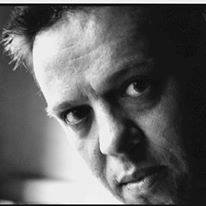
David Cohen is a Wellington based journalist and writer.
This work was originally published as part of an online exhibition at the Jewish Online Museum.
The cover image, a greenstone Star of David, is courtesy of Justin Amler.
